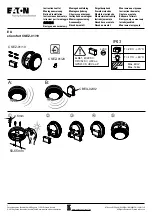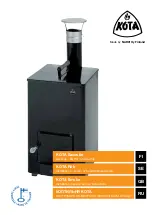
WHAT TO DO IF NATURAL GAS IS DETECTED:
1. Leave the house immediately, opening doors and windows as you leave.
2. Do not use your telephone or appliances. Do not turn any light switches off or on. Any
spark or flame could ignite the gas.
3. Call 911 and your gas company from a phone that is away from your home.
4. Do not reenter the area until the source of the leak is found and corrected.
If you hear the alarm horn sound 1 beep per second, gas has
been detected. Evacuate everyone from the building.
If the unit alarms and you are not testing the unit, it is warning you of a potentially dangerous
situation which requires your immediate attention. NEVER ignore any alarm. Ignoring the
alarm may result in injury or death.
USING THE SILENCE FEATURE (GAS ALARM SIGNAL CANNOT BE SILENCED)
NEVER
disconnect the power to your alarm to silence the horn - use the Silence feature.
Disconnecting the alarm removes your protection!
•
The Silence feature is intended to temporarily silence the horn while you identify
and correct the problem.
•
To use the Silence feature, press and release the TEST/SILENCE button until the horn
is silent if it was the initiating alarm.
•
If the TEST/SILENCE button is pressed while the alarm is in the silence mode, the alarm
will start sounding again.
WHEN THE CO ALARM SIGNAL IS SILENCED:
The CO alarm Silence Feature can be activated
by pressing and releasing the Test/CO Silence button on the initiating alarm while in alarm
condition. The alarm will remain silent for approx. 5 minutes (with the red LED blinking on approx.
every 10 seconds), depending on the level of CO detected. If CO levels drop below alarm levels,
the alarm will remain silent and return to normal operation. If CO levels remain constant or
increase, this indicates a potentially dangerous situation and the horn will sound again. Ventilate
area.
Page 11
Some individuals are more sensitive to CO than others, including people with cardiac or respiratory
problems, infants, unborn babies, pregnant mothers or elderly people can be more quickly and
severely affected by CO. Members of sensitive populations should consult their doctors for advice
on taking additional precautions.
IF THE CO ALARM SOUNDS:
1.
Operate SILENCE button;
2.
Call your emergency services, fire department or 911. Write down the number of your local
emergency service here:
3.
Immediately move to fresh air - outdoors or by an open door/window. Do a head count to
check that all persons are accounted for. Do not reenter the premises nor move away from
the open door/window until the emergency services responders have arrived, the premises
have been aired out and your alarm remains in its normal condition.
4.
After following steps 1-3, if your alarm reactivates within a 24 hour period, repeat steps 1-
3 and call a qualified appliance technician to investigate for sources of CO from fuel-
burning equipment and appliances and inspect for proper operation of this equipment. If
problems are identified during this inspection, have the equipment serviced immediately.
Note any combustion equipment not inspected by the technician and consult the
manufacturers' instructions or contact the manufacturer(s) directly for more information
about CO safety and this equipment. Make sure that motor vehicles are not, and have not
been, operating in an attached garage or adjacent to the residence. Write down the number
of your local emergency service here:
Find the pair of self-adhesive labels included with this Smoke, CO and Gas Alarm.
•
On each label, write in the phone number of your emergency responder (such as 911) and a
qualified appliance technician.
•
Place one label near the Smoke, CO and Gas Alarm and the other label in the "fresh air"
location you plan to go to if the alarm sounds.




































